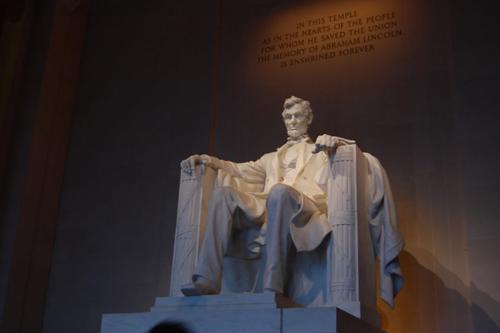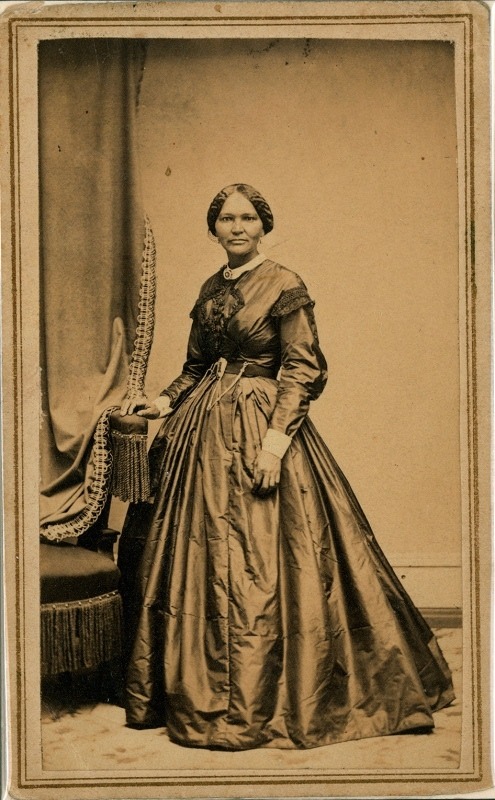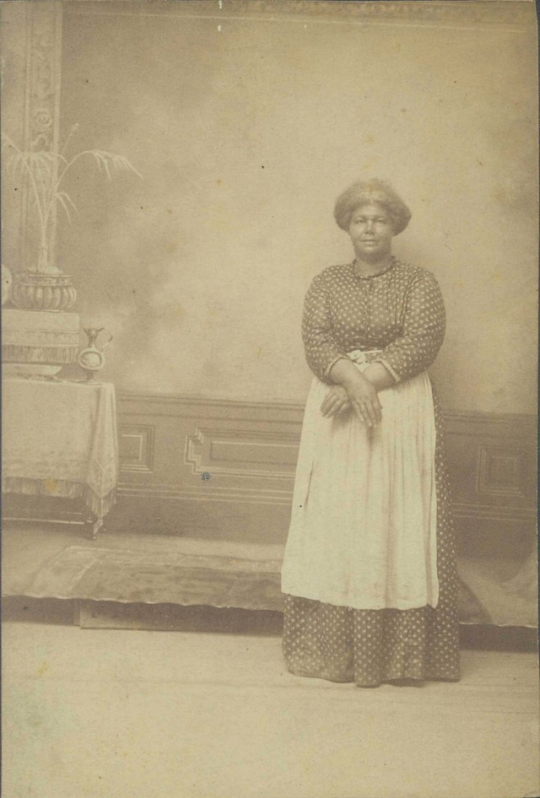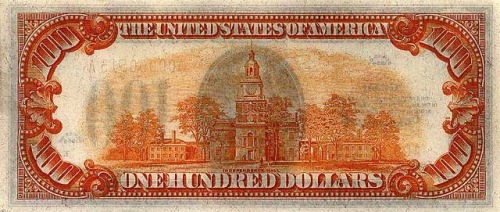#abraham lincoln
You know, we have a tendency to portray assassinations as these incredibly serious and well planned affairs orchestrated by complete masterminds.
When in reality they tend to be dumb, stupid affairs planned by stupid, incompetent people who have no idea what the hell they’re doing.
It’s amazing how some of the most defining moments in history were the dumbest affairs imaginable.

Take the Assassination of Archduke Franz Ferdinand and his wife, which kicked off WW1 and left millions dead and crippled, and ended empires.
It was planned by a small group of incompetent revolutionaries, who had planned this assassination carefully to take full advantage of the man’s visit…
And by that i mean that two of them turned out to be too chickenshit to actually go through with it when the moment came, one saw his wife sitting in the car and had a moment of clarity where he realized murdering him and his wife was a pretty shitty thing to do, one had his gun yam, and when one assassin finally throws a bomb, he overthrows it and it sails over the car and right into the crowd on the other side of the road.
Then he jumps over the side of the bridge planning to make his escape. Only the water is shallow and he just breaks his leg. And then his suicide pill is past its expiration date and he’s just left there, throwing up and with a broken leg as the police march down and arrest him.
Then the final assassin, slinks off dejected he’s not going to get to murder a man and his wife, goes to a caffe and buys a sandwich, only to see the archduke and his car roll up in front of him, q result of a driver who’s not familiar with the city and has made a wrong turn.
He jumps up and fires.
History turned on a sandwich and wrong turn.
It would be an hilarious comedy of errors, if it wasn’t the incredible cost in lifes as WW1 destroys Europe, and lays the foundation for facist germany, soviet russia and china, and millions and millions of deaths.

Then there is the asshole who killed Abraham lincoln.
Because the president didn’t have proffessional bodyguards yet, he was able to sneak up backstage, and get close enough to shoot him in the back of the head.
That’s stupid enough, but then there was his escape.
Having used his one bullet to kill Lincoln, he has no means to defend himself against Lincoln’s guests, and has to make his dramatic escape…
By which i mean he literally jumped off the balcony, landed on the podium, broke his leg, gave a dramatic one liner to the shocked audience, and then hobbled his way off stage and out the building and avoided capture for over a week.
I don’t know who was dumber. The man, or the people gathered for not managing to stop the man with the broken leg and an empty gun.

Then there was Giuseppe Marco Fieschi, who tried to use this monstrosity of stiched together Musket barrels to kill the king of France and his sons.
He unloaded it right at the monarch as he was passing beneath, but this being unnacurate muskets, the king and his sons were barely scratched, but he killed about 20 other people in the kings entourage. Also one bullet hit marco himself, because the weapon was as safe to use as it looked.
That was a pretty stupid and crude assassination attempt.
Then the moron, because the king sent his doctors to save his life somehow thought that this meant the king would pardon him, so he turned very cooperative and named all his co-conspirator.
As it turned out, the king only wanted him alive so proper justice could take place, and he was executed for massmurder and attempted regicide.

And then there is the story of Otoya Yamaguchi, who assassinated Inejiro Asanuma. It was the single most important political assassination of post war japan, maybe in all of Japan in the 20th century, as Inejiro was the leader of the Japanese Communists, who dreamed of turning his country into a second China, and following in the footsteps of Mao(Who he greatly admired) and was making inroads in japanese politics.
He was also the glue that held the Japanese Communist cause together, and their only shot at actually becoming a real force in politics, and the moment he was killed, it pretty much disintegrated and died on the vine, becoming less and less relevant as the party ripped itself apart after his death, until finally it just disbanded.
The famous picture above makes it seem like a really dramatic, and well calculated assassination. However, that picture is taken after the mortal blow was struck.

Here is the actual killing blow. The assassin’s plan was literally, run up to him on stage and stab him with a short sword, and hope that no one steps up to stop him, or the guy doesn’t move and use the podium as a barrier between them.
It was literally a stupid plan thought up by a 17 year old, and he pretty much just slammed into his target with such force his own glasses just flew off.
Again, it was the most important and defining assassination in modern japanese history, and it all boiled down to, run at him with a sword, and hope no one stops me.
It’s amazing how some of the most important and defining deaths was caused by stupid people, with dumb plans, with dumb, blind luck on their side, allowing them to triumph in the face of their own, incredible shortcomings.
“Oh, Honest Abe, which piece of memorabilia should I buy from your gift store?”
“The marble bust. It’ll look sweet on your dresser.”
“You are so wise, Abraham Lincoln. So, so wise.”
I totally imagined this going down like that scene from Hercules…
Who put the man in emancipation?
Lincoln!
Nick (who before this has been known as boyfriend and from here on out will be blessed with his God given name) and I visited Gettysburg this past Memorial Day weekend (predictably I was on the verge of tears the entire time). After a long day of trudging through the battlefield, we made a pit stop at the Soldiers National Cemetery.
For those of you who haven’t been to Gettysburg (not that I’ve been there a lot; I’ve been once), people there seem pretty devoted to the whole dressing up in period clothing thing. Like to an intense degree. We basically couldn’t go anywhere without seeing someone dressed up. (It was excellent.) The cemetery was no different. When we first got there and walked through the gates towards the monument to Abe Lincoln, I immediately spotted a whole group of reenactors. We followed them, because there was a guy dressed in a top hat who looked suspiciously from the back like Lincoln and I was praying for a reading of the Gettysburg Address.

It ends up they were having a Memorial Day service. Nick wasn’t too into it, but it had been a long day for someone who doesn’t find the Civil War nearly as interesting as I do, so we only stuck around for a little bit. The guy with the banjo quietly plucked “Hard Times” while the women milled around, waiting for the service to begin. I stared up at the Soldiers Memorial, my feet weighted down to the ground that Abraham Lincoln had yet to tread 150 years ago, because the battle hadn’t been fought. They wouldn’t be there until July and Lincoln until November, but still he had walked this path once when the brave men who fought were barely in their graves. One hundred and fifty years ago these men were still alive. Lincoln was still alive. And here I was, seven score and ten years later, standing on that spot.
What a way to spend Memorial Day.

“Oh, Honest Abe, which piece of memorabilia should I buy from your gift store?”

“The marble bust. It’ll look sweet on your dresser.”

“You are so wise, Abraham Lincoln. So, so wise.”
Four score and seven years ago our fathers brought forth on this continent, a new nation, conceived in Liberty, and dedicated to the proposition that all men are created equal.
Now we are engaged in a great civil war, testing whether that nation, or any nation so conceived and so dedicated, can long endure. We are met on a great battle-field of that war. We have come to dedicate a portion of that field, as a final resting place for those who here gave their lives that that nation might live. It is altogether fitting and proper that we should do this.
But, in a larger sense, we can not dedicate – we can not consecrate – we can not hallow – this ground. The brave men, living and dead, who struggled here, have consecrated it, far above our poor power to add or detract. The world will little note, nor long remember what we say here, but it can never forget what they did here. It is for us the living, rather, to be dedicated here to the unfinished work which they who fought here have thus far so nobly advanced. It is rather for us to be here dedicated to the great task remaining before us – that from these honored dead we take increased devotion to that cause for which they gave the last full measure of devotion – that we here highly resolve that these dead shall not have died in vain – that this nation, under God, shall have a new birth of freedom – and that government of the people, by the people, for the people, shall not perish from the earth.
Post link
Boyfriend and I made plans for Memorial Day weekend. We’re going to Gettysburg. I got so excited looking at the tourism website I felt like throwing up.
Today I texted my boyfriend to tell him that I might be slowly turning into a Republican. He ignored the REAL EVIDENCE I supplied him with and said that I probably just wanted to be more like Abraham Lincoln.
(Once he asked me if I’d break up with him if Lincoln was alive today. I told him no, I’d just want to like… be near him at all times and have him tell me his secrets.
He didn’t believe me.
But seriously, Lincoln freed the slaves and I can barely be counted on to make my bed every morning, so, you know.)
Post link
A few weeks ago, I finished reading Team of Rivals. It basically ruined my weekend, because Lincoln died at the end and apparently the 148 years in between then and now isn’t enough distance for me. I kept having to put the book down and walk away from it to compose myself. I am insane.
In 1977, Orioles third baseman Brooks Robinson officially retired as an active player. Robinson played for the Orioles for 23 seasons – his entire major league career – and 2,896 games. Above, Robinson rounds 3rd after hitting a home run against the A’s in 1971. (Carl D. Harris, Baltimore Sun photo)
1858: Senatorial contenders Abraham Lincoln and Stephen Douglas held the first of their seven famous debates.
1944: The United States, Britain, the Soviet Union and China opened talks in Washington that helped pave the way for establishment of the United Nations.
1959: President Dwight Eisenhower signed an executive order proclaiming Hawaii the 50th state.
1994: On a vote of 235-195, the House approved a $30 billion crime bill that banned certain assault-style firearms.
Compiled by Laura Lefavor and Paul McCardell.
Numismatics is the study of currency, money, and its uses thereof. U.S. Currency is noteworthy for several reasons:
(ha! “note” worthy! Get it? It’s another of my famous puns. You lucky, lucky bastards…)
Anyways:
-Did you know that US currency is the only money where the notes are all the same size? People in Europe refer to USD as “Monopoly Money” for that reason. Seriously.-Since 1969, the largest denomination in circulation of US currency is the $100 Note. On top of that, there are far more people in the U.S. than there are $100 notes. Consequently, whenever you use a $100 note, most people would be smart enough to verify the authenticity of the note!
So, starting from the top:
-Yup. The first issuing note of $100 from the U.S. Treasury featured Lincoln on the note. It was in 1862, one year before his assassination, and in the midst of the Civil War.
-The next series was put into Circulation in 1870. It featured Senator Thomas Hart Benton (Missouri) on the note. He was most closely associated with the “Manifest Destiny” idea of westward expansion. Also, do you see where it says “GOLD” all over the note? US Currency is ensured in value by our stores of gold bullion, which are kept in places like Fort Knox, Kentucky or the Federal Reserve Bank, in NYC.
-1914 Was the first time Benjamin Franklin made his appearance on the note. That is Independence Hall on the back (it is where the Liberty Bell is: in Philly.)
-1966 Was the next series. I kinda like the typography on that note. It is kinda cool looking. It also has a new seal of the US Treasury, and the Latin has been replaced with English. It was issued because of a bunch of changes internally, and because of a decrease in the amount of currency in circulation.
-Series 2006A was the next release of the note. It was actually released in 1996, but was renamed the 2006A because it underwent numerous changes to stop counterfeiting efforts.
-the most current version of the currency from 2009. Current Currency designs are often subject to recalls, modifications, and so forth. (Current Currency is the correct terminology. it is also alliterative, with the same root for each word. Do you KNOW what that means? It means that I have given you lucky bastards TWO examples of my stunning word-play, in only one post! You guys hit the freaking jackpot with me!) The 2009 series was DESIGNED in 2009, but was released in 2011, recalled and replaced with an uncolored version (some kind of problem with creasing), and the next series is set to be released in October of 2013.
It is actually kind of interesting, when you read about it. Also, look at world currency pictures at some point. They’re often quite beautiful. Another thing to look for: in the UK, Coins issued with the Portrait of the Queen are issued with her age correct for the date of issue. So, the first coins released under her reign showed a young woman. Now, they show her to have aged quite considerably.
Post link
Abraham Lincoln on The Rights of Labor, a selection from The Cry for Justice: An Anthology of Social Protest, edited by Upton Sinclair and reissued by Seven Stories Press. Read aloud at the University Book Store by Brad Craft.
On this Thanksgiving, thank God for the greatest blessing…. his love and for freedom under God for all people.
Not what we have to say about our blessings, but how we use them is the true measure of our Thanksgiving.
May we think especially about our country and give thanks for it.
LINCOLN’S THANKSGIVING PROCLAMATION (condensed version)
The year that is drawing towards its close, has been filled with the blessings of fruitful fields and healthful skies. We so constantly enjoy these bounties that we are prone to forget the source from which they come.
No human counsel hath devised nor hath any mortal hand worked out these great things. They are the gracious gifts of the Most High God, who, while dealing with us in anger for our sins, hath nevertheless remembered mercy.
It has seemed to me fit and proper that these gifts should be solemnly, reverently and gratefully acknowledged as with one heart and one voice by the whole American People.
I do therefore invite my fellow citizens in every part of the United States, and also those who are at sea and those who are sojourning in foreign lands, to set apart and observe the last Thursday of November next, as a day of Thanksgiving and Praise to our beneficent Father who dwelleth in the Heavens.
And I recommend we fervently implore the interposition of the Almighty Hand to heal the wounds of the nation and to restore it as soon as may be consistent with the Divine purposes to the full enjoyment of peace, harmony, tranquility and Union.
HAPPY THANKSGIVING!
Post link

You know how Lincoln looks up to Clay, yeah that
The Ultimate Showdown 15th Anniversary Redux is out people!
Elizabeth Keckley was born enslaved and lived in Dinwiddie County and Petersburg as a young girl. She purchased her freedom working as a seamstress after moving to Missouri. With her freedom, she became the most sought after dress maker in Washington D.C. Her talents as a seamstress, both before and during the Civil War, led to her being chosen as the personal dressmaker of Mary Todd Lincoln. Over the years, both women became good friends and Mrs. Lincoln looked on Elizabeth as one of her closest confidantes during the White House years.

Juneteenth 2021
“My mother was sold at Richmond, Virginia, and a gentleman bought her who lived in Georgia, and we did not know that she was sold until she was gone; and the saddest thought was to me to know which way she had gone, and I used to go outside and look up to see if there was anything that would direct me, and I saw a clear place in the sky, and it seemed to me the way she had gone, and I watched it three and a half years, not knowing what that meant, and it was there the whole time that mother was gone from her little ones.”
–Kate Drumgoold, “A Slave Girl’s Story”, 1898

“Slavery has existed in this country too long and has stamped its character too deeply and indelibly, to be blotted out in a day or a year, or even in a generation. The slave will yet remain in some sense a slave, long after the chains are taken from his limbs, and the master will yet retain much of the pride, the arrogance, imperiousness and conscious superiority, and love of power, acquired by his former relation of master. Time, necessity, education, will be required to bring all classes into harmonious and natural relations…
Law and the sword can and will, in the end abolish slavery. But law and the sword cannot abolish the malignant slaveholding sentiment which has kept the slave system alive in this country during two centuries. Pride of race, prejudice against color, will raise this hateful clamor for oppression of the negro as heretofore. The slave having ceased to be the abject slave of a single master, his enemies will endeavor to make him the slave of society at large.”
-Frederick Douglass, December 28, 1862, Rochester, New York, Speech at the Spring Street AME Zion Church

Women’s History Month
Margaret Palm-African-American History-Civil War
Margaret Palm lived in Gettysburg, Pennsylvania, along with 190 other free African-Americans, making up about 8% of the town’s population. She rented a white shack on the west end of Emmitsburg Road, and lived there with her husband, Alf Palm and their one child.
During the months leading up to the Battle of Gettysburg, African-American members of the Gettysburg community began fleeing their homes for fear that their freedom and safety would be in jeopardy, once the Confederate army invaded their little town.
There are many stories that surround the persona of “Mag Palm”, as she was called, some perhaps mere legends passed on by other civilians over the years. One legend refers to Mag as “Maggie Bluecoat”, referring to the story that she wore a blue coat of an officer of the War of 1812, and carried a musket while aiding other slaves in their fight for freedom from slavery.
One account, however, of an attempted kidnapping of Mag Palm by two local men is well known and well documented. Many free African-Americans were often victims of kidnapping by their own white neighbors, often to be sold off to Southerners for slavery.
Like the majority of African-American women in the Gettysburg community during the Civil War years, Mag made a hard living by scrubbing floors and washing the clothes of her white neighbors. One cold winter night in 1858, three years before the war even began, upon returning home from picking up her pay from one of her employers, Mag was attacked by two men who tried to tie her hands and take her away. . Mag managed to fight both men off with the help of another neighbor, John Karseen, a store owner in town, who witnessed the attack. Years later Mag Palm was photographed demonstrating how the men bound her hands and documented the attack for history.
During the battle, her home on Emmitsburg Road was occupied by the Union army and eventually destroyed in the fighting on the last day of the Battle of Gettysburg, July 3, 1863. Despite hardships in her own marriage, as her husband drank and was often prone to fits of rage, she managed to buy her own home again along Long Lane, a black community in the town, after the battle was finally over. She continued to struggle financially and was never able to stop beating rugs and scrubbing floors for a living.
Mag Palm passed away in October of 1896 from a heart ailment. She was buried in the Lincoln Cemetery in Gettysburg, among many other African-American civilians of the town. Her courageous story of struggle and survival is only one of the many forgotten African-American civilian stories of the women who lived and survived the battles fought right in their own communities, during the Civil War.


March is Women’s History Month
Mary Elizabeth Bowser-Freed Slave, Union Spy, and Abolitionist

Mary Elizabeth Bowser was born Mary Jane Richards on May 17, 1846, near Richmond, Virginia. She was born a slave to the Van Lew family, Eliza Baker and John Van Lew, of Richmond, Virginia.
Records show that Mary was baptized at St. John’s Church, the white congregation of the Van Lew family, as opposed to the First African Baptist Church in Richmond. This fact proves that Mary was treated differently by other slaves, by the Van Lew family from birth.

When she was of age, Eliza and John’s daughter, Elizabeth, sent Mary north to get an education. In 1885, she sent her to Liberia for missionary work and she did not return to the Van Lew home until 1860 again.
A few days after the battle of Fort Sumter, Mary married Wilson Bowser on April 16, 1861, in the same church she was baptized in. The Civil War had just begun.
During the war, Mary was instrumental in helping Elizabeth with her spy operation and aided her in helping escaped slaves take refuge in the Van Lew mansion. Mary, as well as many of the slaves freed by the Van Lew family, completed dangerous missions to get information to General Grant about the movements of the Confederate army. Mary even managed to obtain a position as a servant in the household of Jefferson and Varina Davis. She worked directly for Varina Davis and managed to learn about important strategies and plans of the Confederate government.
Soon after the war, Mary Bowser worked as a teacher to freed slaves in Richmond and, in 1867, founded her own school in Georgia. She alone taught young children and adults, all former slaves, to read and write.
A letter surviving with the date, June 1867, stated her new name as Mary Garvin and the intention that she would be joining her new husband in the West Indies.
The year of her death is unknown, but a memorial plot was placed in her memory at Woodland Cemetery in Richmond, Virginia. It honors her memory as an agent who helped saved the Union during the Civil War. The stone reads, “Mary Elizabeth Bowser, Born 1840, Union Military Intelligence Agent, She risked her life and liberty so that all could know freedom.”


African-American soldier-Union Army-Civil War













